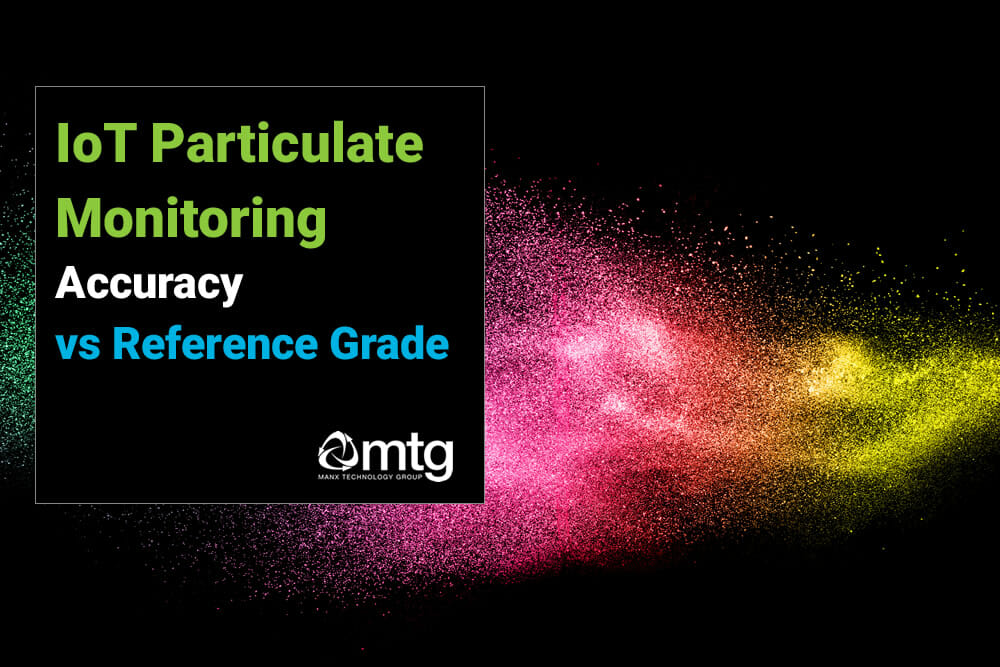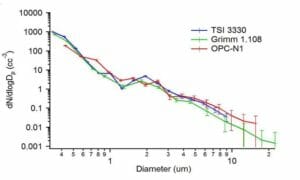
How do IoT air particulate sensors compare to the reference-grade equipment used by agencies and Government bodies? In this post, we look at the level of accuracy that can be achieved using the Libelium Smart Environment compared to more expensive reference equipment.
Background

The health risks associated with poor air quality are well understood (something we discussed here). Local government, councils and agencies are beginning to take their environmental responsibilities seriously and have begun deploying local and hyper-local air quality monitoring solutions.
As more organisations are looking to measure particulates in urban settings, there are questions relating to the cost of reference-grade equipment and the accuracy of IoT sensors. IoT provides an inexpensive, powerful solution – but is the accuracy good enough?
The Libelium Plug & Sense Smart Environment is a powerful IoT solution that can measure air quality, gases and particulates. The platform supports a wide range of communication protocols including WiFi, 4G, LoRa, Zigbee and Sigfox – allowing data to be transmitted to cloud environments, databases and application servers with ease.
Principle of operation
The sensors use laser beams to detect particles from 0.35μm to 40µm diameter with 24 bins. Count measurements are converted into mass concentrations of PM1.0, PM2.5 & PM10 using embedded algorithms. The Particulate sensor can measure from 0.35μm to 40μm; from cleanroom levels to pollution levels of 2000μg/m3, with the ability to size speciate pollen!
Particle Sensor Accuracy
The Libelium particulate utilises a state of the art particulate sensors from Alphasense OPC-N3. The OPC-N3 sensor used within the Libelium system can measure PM1, PM2.5 and PM10, every second – and provides histograms of particle counts by size. The OPC-N3 is engineered by aerosol scientists and is validated by research organisations and university laboratories worldwide.
Comparison

In independent field studies, the OPC-N3 sensors were found to have moderate to good correlations with reference equipment for PM2.5, and moderate correlations for PM10.
To maintain perspective, a Libelium system can be deployed for around £2,500 while reference equipment can cost upwards of £20,000. With Libelium, alongside particles, you can also measure gases, temperature, humidity and noise.
IoT is a perfect solution to provide insights where they are lacking, or used to support or augment existing environmental monitoring efforts. While inexpensive sensors don’t quite 100% match reference grade equipment, the accuracy is sufficient to determine trends and points of concern.
Further Reading
Alphasense OPC-N3 field evaluation
http://www.aqmd.gov/aq-spec/product/alphasense
Long-term field comparison of multiple low-cost particulate matter sensors in an outdoor urban environment
https://www.nature.com/articles/s41598-019-43716-3
Evaluation of the Alphasense Optical Particle Counter (OPC-N2) and the Grimm Portable Aerosol Spectrometer (PAS-1.108)
https://www.ncbi.nlm.nih.gov/pmc/articles/PMC5580936/
More information
Speak to MTG about how Libelium products can be deployed to provide hyper-local air quality and particulate monitoring solutions for your organisation. The system can be ordered, programmed and deployed in a matter of days – with real-time data available minutes after deployment.
E-mail sales@mtg.im or call +44 1624 777787

